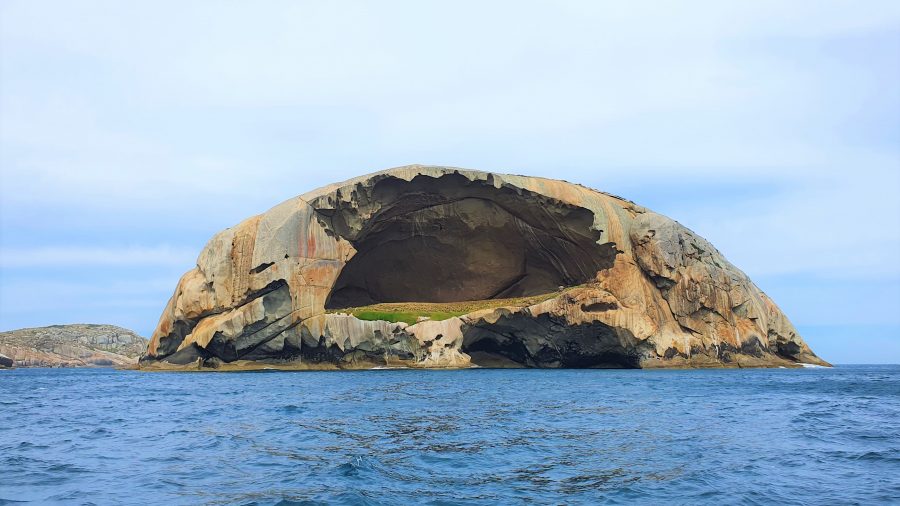The apex predator of the great oceans is not found in the water, but high, high up in the clouds. There glides the dracotross. This ocean going dragon flys incredible distances on its nomadic wanderings, only coming down to the water to hunt.
Biology
The body of a dracotross has evolved to a body shape specialised for ultra-long distance flight. Its body is narrow and the snout is elongated and pointed for minimal drag. The wings are extremely long and thin and are often more than ten times the width of the dragon at the shoulder. Such a high aspect ratio allows a dracotross to gently glide for hours, even days, with minimal beats of their wings. When flying, they use thermals and updrafts to gain altitude and dynamically soar across the wind layers, locking their wings into position to reduce muscle strain. Though the legs and wings are very strong, dracotross are clumsy swimmers and awkward walkers as their body shape gets in the way. All four of the feet have webbing between the toes for greater swimming power that’s used when taking off from the water.
Behaviour
The diet of a dracotross is simply whatever will fit into its mouth. Out on the ocean this is tuna, dolphins and other large fish. With their superb eyesight they spot their prey from high above and then dive bomb them to either spear the fish with the point of their snout or snag them with their teeth. After eating the catch on the surface the dracotross will return to the air and continue its wandering. Such wandering will take a dracotross all across the oceans but rarely across land as they don’t like the dryer air and there’s no fish. Dracotross don’t have lairs and mostly sleep on the wing, though they will seek out a coastal cave if they need to rest. To these nomads gold and treasure are just things that are heavy to carry. They are somewhat attracted to jewellery and often use their magic to decorate themselves with piercings, necklaces and bangles.
Dracotross breed much more slowly than land dragons, with a breeding pair producing only one egg every twenty years. Both parents work together to incubate and raise a single hatchling, staying as a pair for five years until the young dragon is fully independent. This is the only time a dracotross will spend an extended period of time on land, if you can call the tiny isolated islets and atolls they next on land. To keep the egg and hatchling safe from the weather, caves are preferred but otherwise the parents will use magic to make a sheltered nest site. Nest sites that are big enough and isolated enough are rare so sites are often reused by breeding pairs that have formed long term relationships.
Battle
Though as cunning and intelligent as any other dragon, dractoress are not well read, in keeping with their low interest in possessions. Their magical power is still formidable but follows a more natural and spontaneous theme than the static learning of wizards and books. Expect them to wield spells of weather, water, wind and stealth. With no interest in civilization or power structures, most dractross are chaotic neutral in alignment, preferring to look after themselves and their family. With their endless soaring of the oceans and long life spans, there is little about seas they don’t know about. If approached carefully, they will trade their knowledge for magic items that assist in flight and hunting.
A dracotross will only actively seek violence if they or their nest are threatened. Such violence is met out from altitude and at speed. They will stay high and well out of range of spell and arrow until they are sure of their approach. With a folding back of their wings, they dive and bring twenty tons of dragon moving at near terminal velocity at their target. Anything in the water that is nearby will be utterly shattered by shockwave from the impact on the water. The dracotross will then swim away underwater before returning on the surface to search debris for items and food of interest. If surprised on the ground or at low altitude, they commonly fly large circles around the enemy and bombard them with spells and bolts of lightning breath. They avoid strafing runs and air to air combat as their long wings limit their manoeuvrability.
Story Ideas
- The party must sail across the Tevers Archipelago but the journey is made dangerous by a nesting pair of dracotross. They’re somewhere up there above the high clouds.
- A young dracotross fledgling has washed up on a beach not far from where the party are staying. The locals are divided. Do they kill it or try to find its parents?
- The dracotross Ever-sky-whistler has garnered the enmity of a naval commander. Would be so kind as to deal with this for them, humanoid to humanoid?
Image Credit – Cleft Island, Victoria by Amplitur – CC-BY-SA-4.0

